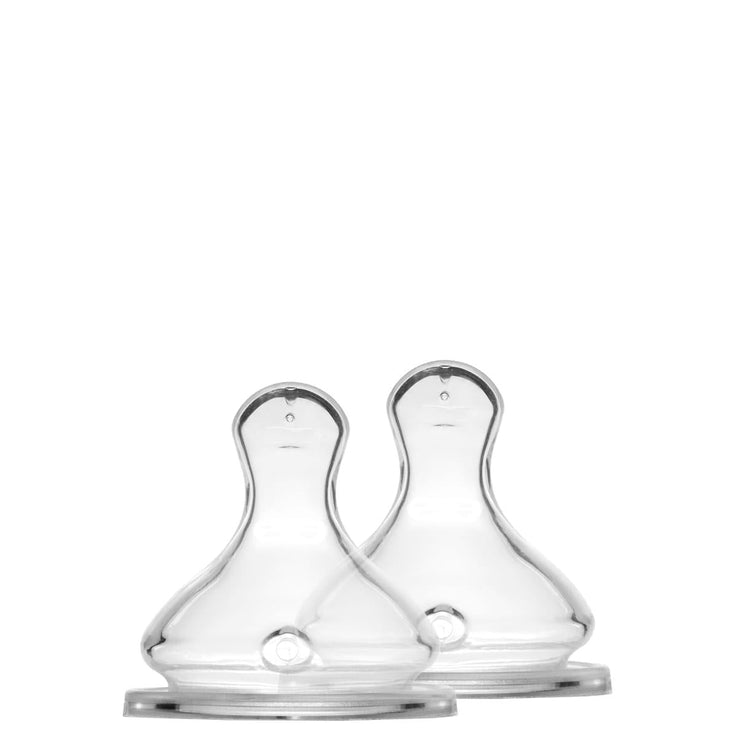Your new physiological silicone bottle is full of resources! And the 10 tips given in this article are too…
Allow us to support you in weaning your breastfeeding to make your task easier and allow you a best daily use of your favorite physiological bottle.
Tip 1: Dilute the contents of physiological bottles
If you are in a transition period and are considering weaning your baby, you can dilute the first bottles of powdered milk with breast milk . Thus, your infant's preparations will remind him of the taste of his meals at the breast and will communicate to him a greater desire to suck his bottle.
Tip 2: Pass the baton

Baby may be taken aback the first few times you give him a bottle of formula. It is then wise to pass the baton to another member present , such as your partner or their dad, to break habits. A change in routine can cause your baby to behave differently!
Tip 3: Warm the physiological bottle
Using a thermometer can be very effective in measuring the temperature of warmed milk. The idea is to heat the milk contained in the physiological bottle between 35 and 37°C , to allow your baby to find the same warm milk as he is used to at the breast.
Cold milk will in fact be more likely to put off your little one the first times he has to deal with his bottle.

Tip 4: Invite without forcing baby to drink
If baby refuses to take the teat from your psychological bottle, do not force him to drink and gently place the tip of the pacifier under his nose for a few seconds, without covering his nostrils, to invite him to taste. You can make small circles or movements from left to right to make the start of his meal more fun and encourage him to grab the pacifier with his mouth.
Tip 5: Warm the physiological pacifier

If, despite your patience, baby still sulks at the bottle you hand him, warm the pacifier for ten seconds under hot water , after placing the baby in a place away from the handling site to avoid any risk of burns.
This will have the effect of warming the pacifier and softening it to make it more welcoming, like mom's nipple!
Tip 6: Change the flow rate of the physiological bottle
Baby is now taking the pacifier but seems to be getting annoyed? Perhaps the milk flow supplied is too slow! If when you breastfeed, the milk supply is rapid, especially in the event of a strong ejection reflex (REF), then it is completely normal for your child to become impatient. Test a physiological pacifier with a different flow rate , such as a medium flow rate, and observe your child's behavior. Conversely, a rapid flow from the bottle can surprise and frighten him. Logically choose a slow flow pacifier.
Tip 7: Offer yourself several physiological bottles

If you choose to give your newborn bottles as soon as she returns from the maternity ward, consider investing in several bottles . Your nights could well be interrupted by numerous awakenings for several weeks, even several months...
Having to wash the same bottle over and over again at nighttime hours will not help your physical recovery by keeping you awake longer.
At Elhée, our range offers you up to 10 different colors of baby bottles to brighten up your endless evenings!
Tip 8: Use a physiological bottle rather than a traditional bottle from birth
Use a physiological bottle whose shape resembles that of the nursing breast in order to comfort your child as soon as you leave the maternity ward. Contact with this type of bottle will be different and more natural.

Tip 9: Cut the cord gradually
If delegating to your other half, take the opportunity to take a little respite. And Don't make the mistake of checking to see if everything is okay in the next room, or spying on the sly!
You would send a contrary message to your baby who, upon noticing you, might again reject the bottle then held by your other half or the person in charge of the meal.
Tip 10: Offer dairy products or cook them!
If, despite numerous inconclusive tests, baby is still not convinced by his bottle, you can suggest white cheeses or some petit-suisses to maintain a regular calcium intake.
And why not sell off your stocks by cooking milky snacks made from breast milk, such as yogurts or small cakes, which are easy for babies to eat?
Remember to throw away any preparation that has been defrosted and not consumed by your child, after each meal.
Élhée’s advice, in brief
- It is not easy to wean your child or see him cry to demand your presence.
- Stay kind to yourself and patient with your child.
- Wanting to stop breastfeeding does not make you a bad mother and will not traumatize your baby into adulthood.
- Stay calm in the face of external thoughts and act according to what is best for you and your child.
- Discover all our tips for successful weaning with complete peace of mind by clicking on this link !



